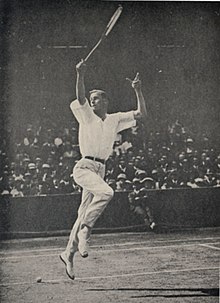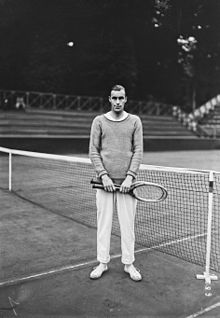Moxie
Multiple Major Winner
- Joined
- Apr 14, 2013
- Messages
- 44,355
- Reactions
- 15,406
- Points
- 113
There's a lot of "myth" to Bjorn Borg. But if he pops up at #12 based on the ELO, he's not ALL myth, right? Before we go any further, I will say again that Borg was the guy that brought me to real tennis fandom. Come for the teen idol, stay for the tennis. So prejudice is involved here. That's my caveat.Reading through the Borg entry I'm struck by how the myth of Borg playing beyond 1981 is just that...a myth. The Laver quote says a lot:
Back in 1974, Laver got his first good look at the intensity that Borg brought to every point of every match that the 17-year-old played. “If you play this hard,” warned the Rocket, “your mind will be drained, you’ll burn out in seven years.”
I will counter what Laver said with the point that, neither Laver nor anyone had seen anyone as intense and committed to tennis as Borg was. Of course Laver figured that intensity would burn itself out. They were used to playing more of a club game. Players drank and smoked, including on court. I would venture to argue that Borg, aside from everything else he did for tennis, he made it a real sport. As Martina did, when she got more fit and forced Chrissie to. Same era.
There are reasons that Borg burned out, and it's not just intensity on the court, as Laver claimed. It was surely that he was, as the author claims, that he was The Beatles of tennis. Plus, there was, surely, partying and cocaine. Note how the post on Borg says that NY was so hard for him to stay focused compared to when he played European events. #studio54 Anyway, it was a lot to deal with, and players now how more people to protect them.
I get the endless question about Nadal: if he didn't play so hard, he wouldn't get hurt as much. But then, would he have won as much? The comparisons with Borg have long been made, for many reasons, most notably the predictions of the shortened career. Note in the article about Borg that they said he was pretty beat up by the USO. As was McEnroe. That's why many thought Nadal would never win the USO. Another thing we get from Rafa detractors is that Rafa plays slow, and they call it gamesmanship, even though they're willing to agree that he is one of the most intense players ever, and that his mental ability to stay "present" is one of his gifts. IMO, if you agree with the ability to focus, you have to accept the OCD part. It's part and parcel of the whole thing.It reminds me of the myth of a "healthier Rafa." A healthier Rafa would be a less intense and physical Rafa, and thus a lesser player. There's something similar with Roger, and how "if only he played to his peak level more, he'd have been unbeatable." Or some such that I occasionally hear from diehard Roger fans.
As to Roger playing more at peak level, I see that as a different complaint. If he could have played at his top level all the time, he would have. That isn't the same as saying if Rafa had been less injured, meaning if he had played a less-physical game, or with less intensity, he might have been a very or completely different player. I'm still not that person who will "blame" Rafa for his injuries. He's less lucky, physically, than his compatriots in the Big 3, and that started before he ever won a Major. Roger and Novak have had very little to complain about, in their long tennis careers, physically. You can say it's their game, but it's also luck. Anyone can roll an ankle, get an appendicitis, or have a car accident, or get mono. Lucky for them that none of those things every happened.
I think what Borg couldn't sustain was a life-lesson for the players who came after him. As you say, and the guy we're following here says: he led the way for what was to come. It wasn't easy on him to be the first. He DID try to take a break and come back. With his wooden racquet (Don't forget that was another part of the tennis era that he was overcoming.) If you ask me, Borg might have lasted if he'd stayed in. He needed, and he took a break at the wrong time. Tennis passed him by really quickly.The point being, what we consider the flaws of our favorite players are often (always?) the flip-side of their strengths. And more so, imagining them without those flaws is somewhat of an impossibility - a myth (in the lesser, non-Campbellian sense of the word). Borg was amazing for seven years, but couldn't possibly sustain that for 10-15 -- not at the level that made him amazing. Maybe he could have taken a long vacation in 1982 and come back refreshed...but even then, could he have played at the same level as he did before? Could he have kept pace with Mac and Lendl, or Wilander? I'm not so sure. The What If scenario seems based on an assumption that probably isn't true.
As much as I love and loved him, I'm still going to ask the hive mind here: Should he be #12? Is it more myth than substance?




